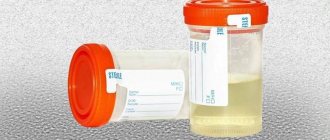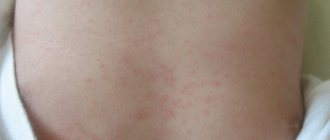According to statistics, about 4% of the world's population suffers from nasal polyps. Men suffer from this disease 2 times more often than women.
Polyps are benign neoplasms that are formed as a result of swelling and proliferation of limited areas of the mucous membrane of the nasal cavity and paranasal sinuses.
A nasal polyp is a small round formation that looks like a pea. Reaches sizes from 5 millimeters to several centimeters. The polyp is practically painless.
Polyps in the nose and paranasal sinuses are formed due to chronic irritation of the mucous membrane. The following factors can be irritants that cause the growth of nasal polyps:
- allergic rhinitis;
- Staphylococcus aureus toxins (this microorganism lives on the nasal mucosa in 10% of people);
- fungal infection of the nasal mucosa.
In addition, there is a genetic predisposition to the growth of polyps in the nose - the special structure of the mucous membrane.
1
Examination of the nasal cavity
2 Examination of the nasal cavity
3 Examination of the nasal cavity
Treatment of nasal polyps must be timely! Polyposis is a chronic progressive disease in which the sense of smell is lost, at an early stage nasal breathing becomes difficult, and at a later stage the nasal passages and openings of the paranasal sinuses are blocked. The patient may also be bothered by excessive nasal discharge.
Nasal polyps, causes of appearance
Medicine has not yet identified exactly why nasal polyps appear. But a number of predisposing factors can be identified:
- frequent colds, runny nose;
- allergies accompanied by a runny nose;
- chronic diseases frontal sinusitis, sinusitis, ethmoiditis;
- deviated nasal septum, leading to breathing problems and enlargement of the nasal mucosa;
- parents have a tendency to form polyps;
- incorrect reaction of the immune system.
Prevention
We recommend that you take timely measures to prevent your baby’s nasal congestion:
- monitor your child’s diet and sleep;
- take him out into the fresh air more often;
- avoid hypothermia;
- wean your child from bad habits (thumb sucking, nail biting, etc.);
- humidify the air in the apartment;
- do not use vasodilator drops;
- avoid mechanical injuries and damage;
- Avoid contact with external allergens.
Experts advise focusing efforts on improving the functions of the immune system. It is important to carry out timely prevention of respiratory diseases. Remember that following basic rules for caring for your baby’s health will help avoid swelling of his nasal cavity.
Symptoms of nasal polyps
With a nasal polyp, the following symptoms can be observed:
- it is difficult to breathe through the nose, this occurs when nasal polyps have grown and closed the space in the nose;
- mucous or purulent nasal discharge, constant runny nose;
- sneezing: polyps cause tickling of the cilia of the mucous membrane in the nose;
- loss of smell and complete insensitivity to odors;
- headache caused by lack of oxygen as a result of difficulty breathing;
- nasal voice.
1 Diagnosis of polyps in MedicCity
2 Diagnosis of polyps in MedicCity
3 Diagnosis of polyps in MedicCity
Why is the formation of fungus in the maxillary sinus dangerous?
How can the growth of a fungal colony be dangerous? In any case, it’s not very pleasant when some kind of parasite, mold, or fungus lives in you. This is really a parasite that lives in the cavity of the maxillary sinus and feels great there. In addition, mycetoma is dangerous because the blood supply and oxygen supply to the brain deteriorates, since the function of nasal breathing is disrupted. A person simply begins to experience partial oxygen starvation due to mycetoma.
Plus, the waste products of the fungus in the maxillary sinus flow into the nasopharynx, which can additionally lead to additional complications, including the development of allergies and provoking respiratory diseases. And, of course, chronic sinusitis.
The role of CT in the study of mycetoma
Of course, a good computed tomogram gives a complete picture of the maxillary sinuses and is the main tool in diagnosing “mycetoma” when examining a patient. A CT scan of the maxillary sinus shows the location, size, and volume of mycetoma damage (local volume or total fungal infection of the cavity).
In fact, computed tomography is the gold standard for diagnosing mycetoma today.
Nasal polyps in children
It is believed that the formation of nasal polyps in children is associated with the body’s reaction to negative environmental influences. The appearance of nasal polyps may be associated with factors such as:
- chronic infectious diseases;
- manifestation of various types of allergies;
- deviated nasal septum, narrow nasal passages;
- fungal infection in the body;
- the body's reaction to certain medications (analgin, diclofenac, aspirin, etc.).
How does the disease manifest in children?
The development of nasal polyps occurs gradually. At the onset of the disease, the child shows signs of a common cold: runny nose and nasal congestion. After some time, difficulty breathing, loss of smell and loss of appetite are added to these manifestations.
Then the parents begin to notice that the child begins to have headaches, purulent nasal discharge, the voice acquires a nasal tone, and snoring at night.
Also, nasal polyps in a child are indicated by such external signs as a slightly open mouth, a slightly drooping jaw, and smoothed nasolabial folds.
Diseases of the nose: varieties
Diseases of the nasal cavity can be conditionally divided into several groups based on the causes that cause them: congenital, traumatic, infectious and neoplasms.
Congenital diseases, as the name implies, are those diseases and pathologies with which a person was born, for example, a deviated nasal septum, too narrow nasal passages and other structural anomalies. Not all such diagnoses require treatment: for example, in the case when the nasal septum is not the cause of inflammatory diseases and does not affect human health. Most congenital diseases require surgical treatment.
Traumatic diseases occur against the background of trauma and mechanical damage to the nose. Broken bones must be set by an ENT doctor within the first five days. If treatment is delayed, the bones will begin to heal incorrectly. Even if the bones are intact after the injury, consultation with an otolaryngologist is necessary in any case, since severe tissue swelling or hematoma may occur.
Neoplasms are benign and malignant tumors of the nasal cavity. These include diagnoses such as: angiomas, papillomas, fibromas, polyps, sarcomas, cancer. In the case of these diseases, the sooner the diagnosis is made and treatment is carried out, the better the prognosis for recovery.
The most extensive and common group of diseases of the nasal cavity and sinuses are inflammatory infectious diseases.
The cause of inflammation in this case is bacteria, viruses or fungi. The most common infectious diseases include diagnoses such as rhinitis and sinusitis. Let's look at them in more detail.
Diagnosis and treatment of polyps
Treatment of polyps in the nose and paranasal sinuses should begin with diagnosis.
Our clinic performs video endoscopy of the nasal cavity and nasopharynx. This study allows you to determine the extent of the process and make an accurate diagnosis. Also, in case of polyposis, a CT scan of the paranasal sinuses is performed. An examination by an allergist is required.
Treatment of nasal and paranasal sinus polyps is aimed at restoring nasal breathing, sense of smell and preventing relapses of the disease. According to the indications (stage of the disease, extent of the process), we carry out conservative or surgical treatment of polyposis.
There are various methods of treating polyposis: both conservative and surgical - removal of nasal polyps with a laser, endoscopic method.
1 Video endoscopy of the nasopharynx in MedicCity
2 Video endoscopy of the nasopharynx in MedicCity
3 Video endoscopy of the nasopharynx in MedicCity
Conservative treatment consists of local administration of drugs into the cavity of the polyps, which help to reduce or completely eliminate polypous growths. The treatment regimen is selected individually.
If the process has gone far and conservative methods no longer help, then it is necessary to resort to a surgical method for treating nasal polyps.
Indications for surgery for polyps
Surgery to remove nasal polyps is necessary in the following cases:
- more frequent attacks of bronchial asthma;
- completely non-breathable nose;
- nasal discharge with an unpleasant odor or blood;
- deformation, curvature of the nasal septum;
- inflamed sinuses;
- loss of sense of smell and insensitivity to taste;
- the appearance of snoring.
Surgical treatment - surgery to remove nasal polyps - is carried out in a minimally invasive way, using endoscopic rhinosurgery. If necessary, we use radio wave and laser equipment.
Nasal polyps
What are nasal polyps?
Nasal polyps are benign tissue formations of the nasal mucosa. They may be yellowish, gray or pink in color, but are not cancerous. Individual nasal polyps can vary greatly, but together they look like bunches of small grapes.
What is the cause of nasal polyps?
In most cases the cause is unknown. It is believed that persistent (chronic) inflammation of the nose (chronic sinusitis) causes swelling and hypertrophy of the mucous membranes of the nose and paranasal sinuses. As the tissue grows larger, it begins to droop under the influence of gravity and a polyp forms. As polyps grow, they can significantly impede nasal breathing.
The paranasal sinuses are air cavities in the bones of the skull that communicate with the nasal cavity. The mucous membrane in them is the same as the nasal mucosa, so polyposis can also develop in the sinuses.
Inflammation of the nose and paranasal sinuses is called rhinosinusitis. Often the cause of this condition is unknown, but it may be due in part to infection. Nasal polyps may accompany rhinosinusitis.
Some diseases contribute to the appearance of nasal polyps. These include asthma, aspirin allergy, cystic fibrosis and some rarer conditions (allergic sinusitis, fungal infections and Charge-Strauss syndrome).
How to detect the presence of polyps in the nose?
2 to 4 out of 100 people will develop nasal polyps at some point in their lives. Nasal polyps can form at any age, but most cases occur in people over 40 years of age. They are twice as common in men. Nasal polyps can also occur in children. In this case, the child should be tested for cystic fibrosis, as it is a risk factor for developing nasal polyps (about half of people with cystic fibrosis have nasal polyps).
What are the symptoms of nasal polyps?
At first you may think you have a cold. Cold causes a runny nose, which is a common symptom of viral infections. This period usually lasts from 2 to 4 days, but the symptoms of nasal polyps do not go away on their own after this time. Without treatment, they will persist for a long time or permanently.
The main symptom is nasal congestion. It becomes difficult for you to breathe through your nose, sometimes so much so that you have to breathe through your mouth for a long time. This is especially unpleasant at night, and sleep is easily disturbed.
Runny nose (rhinorrhea).
A symptom of postnasal drip may occur, when in the nasopharynx there is a sensation of thick secretions constantly flowing down the back wall. Polyps contribute to the constant secretion of mucus, which then flows down the back wall of the pharynx.
The sense of smell and taste may decrease or disappear.
Nasal congestion can make your voice sound higher-pitched (nasal).
Large nasal polyps can cause headaches and snoring.
Sometimes a polyp blocks the nasal passages of the paranasal sinuses. This may make you more susceptible to sinusitis infections.
Large polyps can interfere with breathing at night to such an extent that they cause obstructive sleep apnea, which is potentially life-threatening.
What tests are required for diagnosis?
An ENT surgeon can diagnose nasal polyps based on your symptoms and after examining your nose (rhinoscopy with a rigid or flexible endoscope).
Large polyps can sometimes even be visible through the nostrils. But this is usually not observed and a small flexible endoscope with a camera is used for diagnosis. This procedure is called nasal endoscopy and evaluates the size and location of polyps.
You may also need a CT or MRI for diagnosis. Data from these studies can provide more information about where polyps are located and what effect they may have on other areas of the face, sinuses, and skull bones.
Note : Nasal polyps in only one nostril (unilateral) are not typical. In some cases, this may be a sign of cancer (malignancy). An ENT surgeon must timely assess nasal polyps and determine indications for possible surgery.
Bloody discharge can also be a warning sign. Causes may include infections, nasal adhesions, or improper use of nasal sprays. However, if you are concerned about unilateral nosebleeds, you should visit a doctor, as in rare cases this may be one of the signs of a tumor.
What are the treatments for nasal polyps?
Treatment may be medication at a certain stage before surgery (if there is no doubt about the absence of a tumor).
Corticosteroid nasal sprays
Steroid nasal sprays are usually used for ongoing treatment. These drugs significantly reduce inflammation in the nose. Gradually, nasal congestion decreases, and polyps shrink in size. Sometimes, after only 1-2 weeks of using the drug, a difference in the severity of symptoms is already noticeable. You should consult your doctor if you plan to use the drug for up to 4-6 weeks.
It is important to use the drug every day to achieve a sustainable effect.
Corticosteroids in tablets:
Sometimes, along with surgical treatment, treatment with tablets containing a corticosteroid (prednisolone) is used; a week of such treatment effectively eliminates inflammation in the nose and reduces the size of polyps. Treatment with steroids is a short-term solution because long-term therapy with these drugs can cause significant side effects. Tablet preparations are used in combination with topical steroids (nasal drops or sprays).
Until recently, steroid tablets were used mainly when symptoms were severe, to provide quick relief, such as before surgery. However, short-term use of steroids can often be used as routine treatment. A recent study found that taking steroid tablets for two weeks followed by using topical steroids (drops, sprays) for several weeks resulted in better healing rates. Using steroids for two weeks is unlikely to cause the serious side effects associated with long-term use.
Surgery
Unfortunately, in most cases, surgery is the only solution if the polyps are large or rapidly increasing in size, or in cases where topical steroids or tablets do not have an effect.
Polypectomy involves surgical removal of polyps under local anesthesia or general anesthesia. The type of anesthesia may depend on the number and size of polyps, as well as their location. The frequency of use of traditional surgical methods has decreased due to frequent relapses and the development of endoscopic surgery. Now older methods are used only in cases where there are contraindications to general anesthesia.
Endoscopic surgery in the area of the nose and paranasal sinuses is performed under general anesthesia. The endoscope allows the surgeon to see the inside of the nose and, using a video camera, perform high-precision surgery in confined spaces where it is difficult to do with conventional surgical instruments.
More details in the corresponding article.
Removal of polyps with steroid aerosols
Some people are prone to recurrent nasal polyps. Steroid nasal sprays can be used regularly and long-term to prevent more polyps from developing. But before buying medications and self-medicating, it is better to first consult a doctor to make a correct diagnosis. Regular use of steroid nasal sprays is safe.
Side effects of topical steroid medications
These include nasal irritation, sore throat and nosebleeds. About 1 in 10 people using these medications experience one of these symptoms.
Some side effects are caused by using these medications incorrectly, contrary to instructions.
Patients with increased intraocular pressure (glaucoma) should be more careful when using steroid sprays.
Other treatments
Nasal decongestants (vasoconstrictors that relieve nasal congestion) are often purchased at pharmacies to ease nasal breathing. They may contain ephedrine or xylometazoline and are not recommended for the treatment of nasal polyps.
If they are used to relieve nasal congestion due to other reasons (such as a cold or sinusitis), they should be discontinued within 10 days. Long-term use of these medications may worsen your symptoms and even cause drug-related rhinitis.
Sea water (saline solution) and nasal irrigation is an inexpensive and safe procedure that is always used in combination with other treatments.
If you have a nasal congestion problem and suspect that you have nasal polyps or know that you need to undergo endoscopic surgery on your nose and sinuses, you can make an appointment to determine the diagnosis and find the best solution for your problem.










